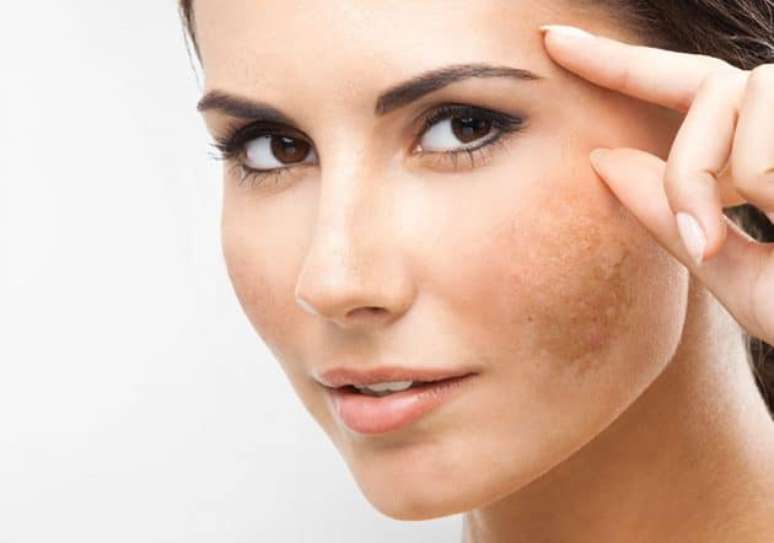Some spots are linked to sun exposure and summer habits. So, you have to pay attention
Summary
Skin imperfections are common in all seasons and should be treated with care. Photoprotection is the most important strategy to prevent the appearance of these spots.
Skin blemishes are associated with summer, but they don’t always appear during this season. They can sometimes appear during other seasons, when people forget to use sunscreen. According to Dr. Claudia Merlo, there are skin spots caused by an excess of pigment (hyperchromic) and those due to its lack (achromic). “Hyperchromic spots cause discomfort to a large part of the population and are very difficult to treat,” explains the doctor.
The most common spots are: melasma, solar melanosis, post-inflammatory hyperpigmentation, phytophotodermatosis and ephelides. “Melasma is characterized by the presence of chronic brownish spots that mainly affect the face, linked to genetic factors, hormonal changes and sun, after pregnancy and the use of contraceptives. There is a treatment, but there is no cure. It is the most common, but not exclusive, stain in women,” says Claudia Merlo.
In the case of solar melanosis, the doctor explains that these spots are the result of the cumulative effect of the sun. “They appear as ‘age spots’ over the years, found in the regions most exposed to the sun, therefore more frequent on the face, shoulders, chest, arms and hands,” explains the doctor.
Among the spots that require more care in summer are post-inflammatory hyperpigmentations, phytophotodermatosis and freckles. Cláudia Merlo states that post-inflammatory hyperpigmentation is formed by spots that appear after an inflammatory process, such as acne, bruises, post-laser or desquamation.
“Phytodermatosis appears when we come into contact with citrus fruits and expose ourselves to the sun. They cause a type of burn that can cause everything from blisters to redness and dark spots on the skin,” he points out.
The doctor reminds us that it is necessary to be careful with drinks such as juices and caipirinhas. “Freckles or freckles are spots with a genetic characteristic, which appear after early and excessive cumulative exposure to the sun up to the first 25 years of life. After this age there is a decline in the capacity for cell repair and proliferation as the first loss of regenerative metabolism occurs. They are dark, brownish and dotted spots, which are found in the regions most exposed to the sun’s rays, such as the face, shoulders, back and chest”, he comments.
Cláudia Merlo explains that cosmetics are fundamental in the treatment, however it is necessary to use sunscreens, oral antioxidant active ingredients, which help with whitening, and avoid heat. “Technologies like picosecond lasers, which degrade pigment without prolonged laser heat, are a great alternative for more resistant blemishes. Peelings are also included in the treatment,” explains the doctor. The spots require a medical diagnosis to be treated. “The main risk is when there are spots linked to diseases, such as melanoma and acanthosis nigricans, because they require diagnosis, treatment and control, since they are linked to damage to health”, underlines Claudia.
And, thinking about stain prevention, photoprotection is the main strategy. “Sunscreen is a guardian of the skin. It can have physical filters that act like a brick wall, where light hits and returns, without absorbency; or they contain chemical filters that filter harmful rays, that is, a chemical transformation of the energy of ultraviolet radiation occurs and the low intensity energy that reaches the skin does not cause the damage of radiation, which is potentially carcinogenic, and therefore also protects the skin the skin from burns,” says dermatologist Flávia Brasileiro, member of the Brazilian Society of Dermatology.
“But it must be reapplied every two hours in case of direct exposure or in a situation in which the patient has sweated, removed sunscreen when entering the sea or swimming pool or even after using a towel,” explains the dermatologist.
But Flávia emphasizes that, to ensure effective protection, it is important to pay attention to the amount of sunscreen applied, which must be 2 mg/cm2 to obtain the protection of the sun protection factor (SPF) described on the label.
«In practice, thinking about the face, this measurement is equivalent to a full teaspoon. In the case of the body, it is recommended to apply one tablespoon of coffee on the right arm and forearm, one tablespoon on the left arm and forearm, two tablespoons on the torso (1 for the front and 1 for the back), two tablespoons for the right thigh and leg (1 for the front and 1 for the back) and two spoons for the left thigh and leg (1 for the front and 1 for the back),” explains the dermatologist, who underlines the importance of without forgetting certain areas.
“It is important to reinforce the application in the cheekbone region, around the lips, on the tip of the nose and on the sides, since these are the areas where areas of cancerization and blemish formation are most noticeable. Don’t forget to also apply sunscreen on the neck, chest and V-neck area of the shirt, which is a forgotten area and, consequently, delimits the line of photoaging and the appearance of actinic keratoses, which are lesions of the skin pre-cancerous type. Regarding the body, the most important recommendation is to apply sunscreen before putting on clothes,” concludes Flávia.
inspires transformation in the world of work, in business, in society. Compass, a content and connection agency, is born.
Source: Terra
Ben Stock is a lifestyle journalist and author at Gossipify. He writes about topics such as health, wellness, travel, food and home decor. He provides practical advice and inspiration to improve well-being, keeps readers up to date with latest lifestyle news and trends, known for his engaging writing style, in-depth analysis and unique perspectives.








